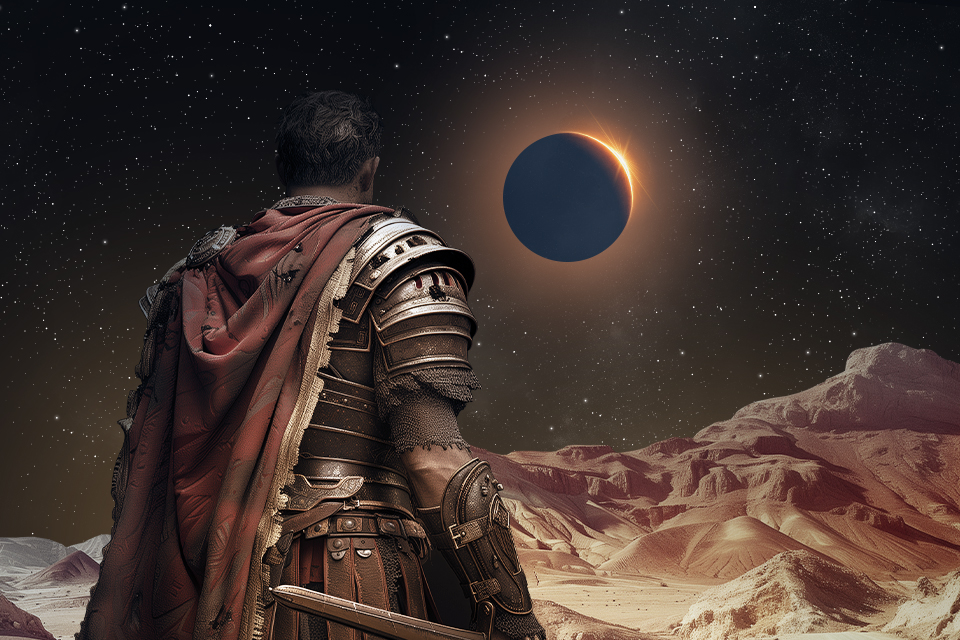Why is Easter “tied” to the first full moon, which follows the vernal equinox? The most common answer is that the crucifixion and resurrection of Jesus Christ took place during the Passover holiday, which is celebrated according to the lunar calendar, and therefore must fall on a clearly defined phase of the moon. However, virtually all of the descriptions of those events that have come down to us contain references to the mysterious “darkness” observed on Good Friday. Could it have been some kind of astronomical event?
A biblical eclipse
This is how it looks like in the Gospel of Matthew: “Now from the sixth hour there was darkness over all the land until the ninth hour. … And behold, the veil of the temple was rent in two from the top to the bottom; and the earth did quake; and the rocks were rent”. Keep in mind that in Judea of that time, the hours were counted from dawn, meaning that according to our modern concepts, darkness lasted from about 12 to 3 pm. The only thing that could “darken” in the sky at that time of day was the Sun. But a solar eclipse in such a phase, when it becomes noticeably dark, cannot last for three hours. In addition, it occurs exclusively during the new moon — the phase opposite to the full moon.
As additional confirmation that a solar eclipse has nothing to do with it, we can take modern calculations of the conditions for the visibility of these phenomena in the first years of the new era. In the period from 20 to 50 AD, eclipses of our sun occurred in spring on 21 May of 30th AD, 10 May of 31st AD, 29 March and 28 April of 32nd AD, 19 March of 33rd AD, 30 April of 40th AD, 19 April of 41st AD, and 8 April of 42nd AD. But none of them were observed in the Middle East with a phase of more than 50% (in fact, a significant decrease in illumination during an eclipse occurs at a phase of about 70%). So, this version does not deserve attention.
“Blood Moon”.
A full moon is a phase of the Moon when the Earth is between it and the Sun. Since the lunar orbit is inclined to the ecliptic (the plane of the Earth’s orbit) by more than 5°, our satellite usually passes “above” or “below” the Earth’s shadow at such moments. But when the full moon occurs near the line of intersection of the orbital planes, also called the “line of nodes”, a lunar eclipse occurs. The sun’s rays, refracted by the Earth’s atmosphere, are mainly red and orange, so the Moon does not darken completely, but acquires a threatening red-brown colour.

It is this phenomenon that is most often mentioned in connection with biblical events, especially since the calculations give us a “perfect candidate” — the lunar eclipse of 3 April 33rd AD, which also fell on a Friday. However, the same calculations suggest that the eclipse on that day was not total, but partial: only 58% of the Moon’s visible diameter was in the shadow (it is difficult to see the “blood colour” at this phase). And, of course, it is impossible to see it during the day.
However, it cannot be argued that due to these circumstances, the eclipse would have gone unnoticed. The ancient traditions of lunar calendar celebrations also include careful observations of the “main reference point” of this calendar, i.e. the Moon itself. Thus, all unusual changes in its appearance should have been noticed at least by the “keepers of traditions” — the ministers of the religious cults of the time. Most of them were literate and almost certainly made sure that all extraordinary events were recorded in their chronicles.
A natural disaster on a public holiday
So, historians consider the version with a lunar eclipse (albeit incomplete) on the day of Christ’s crucifixion to be quite acceptable. But what about “the earth shook” and “the rocks were broken apart”? Did anything like that really happen?
At this point, the Gospels differ from the descriptions of other contemporaries who do not mention any such catastrophic events. Most likely, some kind of natural disaster — a storm, a heavy rainstorm, even an earthquake — could have occurred shortly before or shortly after the crucifixion, and in the imagination of Christ’s followers, who later began to describe these events, the natural disaster became a kind of symbol of heavenly punishment for those who undertook to punish the Messiah. In any case, such an event has nothing to do with celestial bodies, and it is very difficult for us to draw unequivocal conclusions about the course of events almost two thousand years ago. At least the relative positions of the Earth, Sun, and Moon over this period of time can be calculated with sufficient accuracy.
Earlier, we wrote about the “astronomical foundations” of the traditional Chinese calendar.

